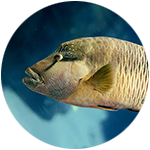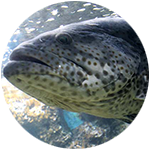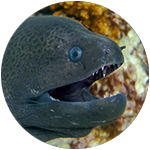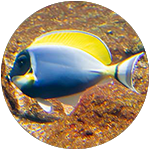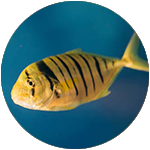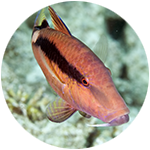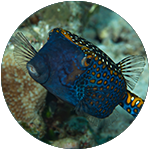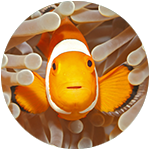What do fishes eat? What are the characteristics of fishes and what features do fishes share?
This month, we take the spotlight and shine it on fishes. Before diving deeper into the ways and wiles of our fishy friends, however, let’s take a little detour.
Is the plural of fish ‘fish’ or ‘fishes’? Well, both are correct. That said, the norm is to use the plural ‘fish’ when referring to two or more fish that belong to the same species and to use the plural ‘fishes’ when referring to two or more fishes that belong to different species. Therefore, when referring to two, three, or more yellow-edged morays, use ‘fish’. However, when referring to a group composed of three yellow-edged morays, two northern stargazers, one giant trevally, and one bluefish, use ‘fishes’.
Now that that’s out of the way, let’s start discovering the world of fishes and gain a deeper appreciation of the most numerous of all vertebrates. Learn what fishes eat and their characteristics. Differentiate between bony fish (osteichthyes) and cartilaginous fish (chondrichthyes), and understand the many adaptations of fishes for survival.
A Welcome Note from Sabrina
Sabrina is a Zoological Manager at SeaWorld Yas Island, Abu Dhabi. She has worked with SeaWorld for over 18 years, with a big focus on husbandry of large tropical saltwater systems, including bony fish, sharks, rays, eels, and invertebrates. Throughout her career, she has worked with various teams and animals, successfully launching guest interaction programmes, such as ray feeding and swimming with sharks. Sabrina has played a crucial role in the pre-opening process of the Endless Ocean realm, by ensuring all animals fully adapt to their new environment, and by helping to bring the SeaVenture experience to Abu Dhabi.
Fish habitats: where do fishes live?
Fishes live in either freshwater or saltwater. Their habitats include lakes, ponds, rivers, streams, springs, wetlands, canals, reservoirs, coral reefs, kelp forests, bays, and deep-sea habitats like abyssal plains, hydrothermal vents, and cold seeps.
Factors influencing fish habitat
Fishes choose their habitat based on several factors. These factors include the availability of food, amount of light, oxygen levels, competition for resources, and risk of predation. All things being equal, fishes choose the habitat that would maximize their net energy gains.
Simplistically speaking, the ideal habitat provides more benefits (for instance, due to an abundance of prey) than risks (for instance, the presence of many predators). The former makes it easier to find food, while the latter means a lot of energy spent avoiding and evading predators. It is also important to note that fishes’ preferred habitats may change throughout their life cycle.
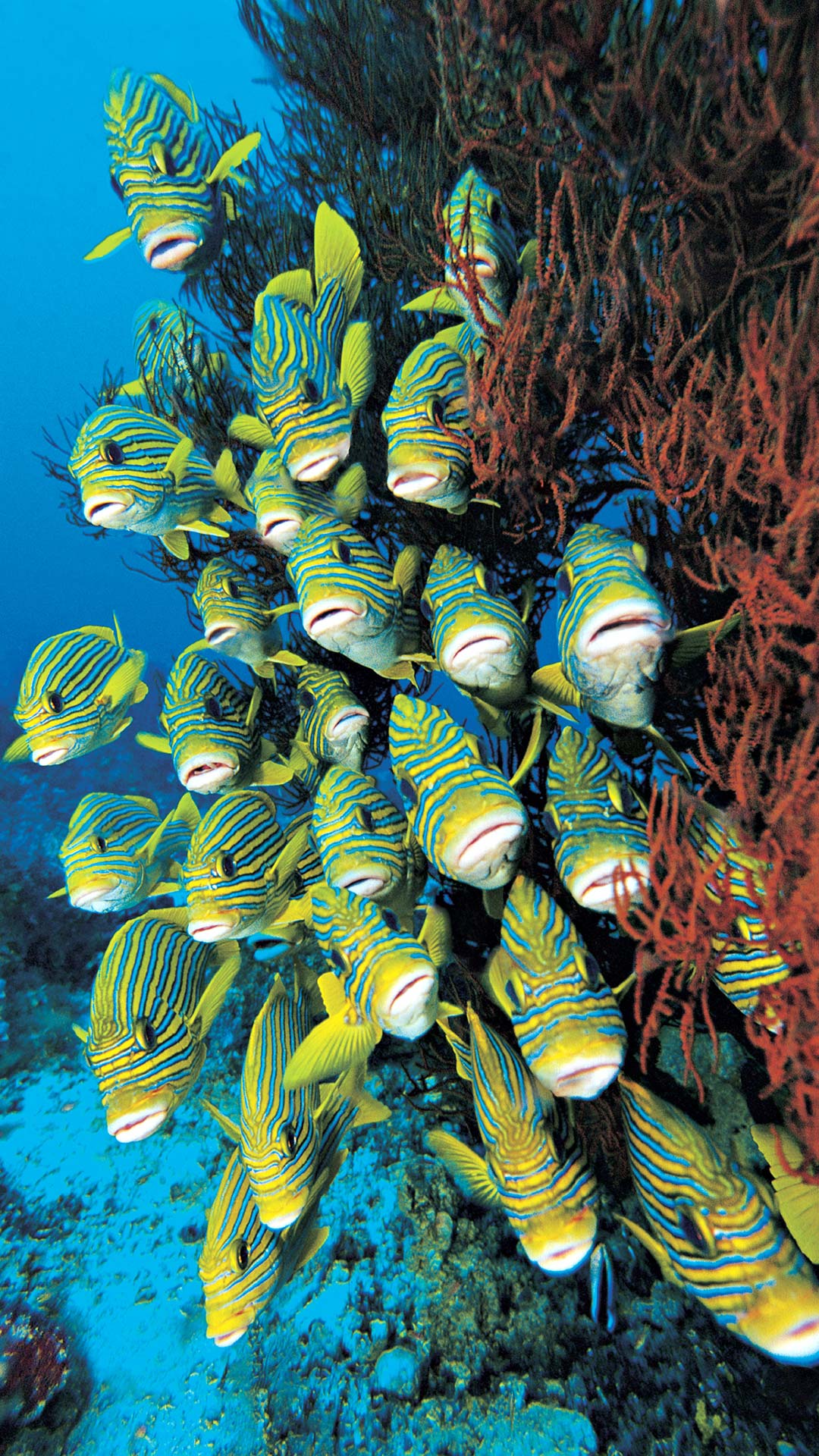
Scientific facts about fish: what is fish?
Fishes are a group of aquatic animals. They are vertebrates like us, so all fishes have skeletons inside their bodies. However, whereas we are warm-blooded animals that breathe air, grow hair, and feed on milk as babies, most fishes are cold-blooded, live underwater, and absorb oxygen from the water through their gills.
All fishes fall under one of three groups: Agnatha (jawless fish), Osteichthyes (bony fish) and Chondrichthyes (cartilaginous fish). The following is a summary of the scientific classification of fishes:
Kingdom: Animalia
Phylum: Chordata
Subphylum: Vertebrata
Divisions: Agnatha (jawless), Gnathostomata (with jaw)
Classes: Cyclostomata (under Agnatha), Chondrichthyes (under Gnathostomata), Osteichthyes (under Gnathostomata)
Class Cyclostomata: jawless fish
One of the primary characteristics of fishes under the Agnatha division is their lack of jaws. Instead, they have a circular mouth with rows of teeth. The parasitic lamprey and hagfish are examples of jawless fishes, but some do not consider them true fishes because they only have a rudimentary skeleton.
Class Chondrichthyes: cartilaginous fish
Sharks, skates, and rays are Chondrichthyes. They have a skeleton made of cartilage, which is lighter, more flexible and less dense than bone.
Class Osteichthyes: bony fish
The skeleton of bony fishes is calcified bone. Most fishes belong to Class Osteichthyes; it accounts for more than 400 families and 29,000 species. There are bony freshwater fishes (e.g., goldfish and trout) and saltwater fishes (e.g., perch and trevally), and their size can vary greatly from less than seven millimeters (e.g., the male photocorynus spiniceps angler fish) to more than four meters (e.g., swordfish). They can also weigh 2,205 kilograms (e.g., ocean sunfish).
Characteristics of Osteichthyes
Aside from the calcified bone skeleton, standard Osteichthyes characteristics include:
- Jaws
- Paired fins
- Paired nostrils
- A pair of gill openings
- Operculum (flap or covering that protects the gills)
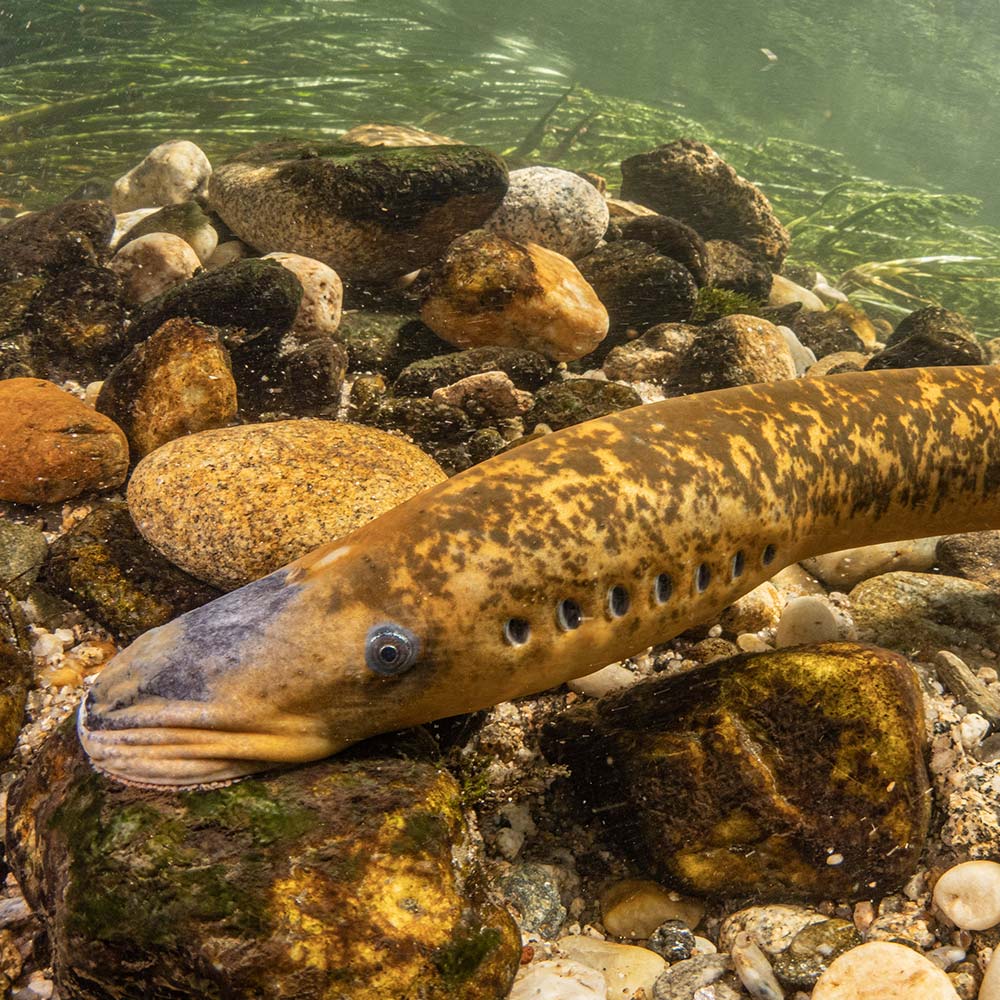
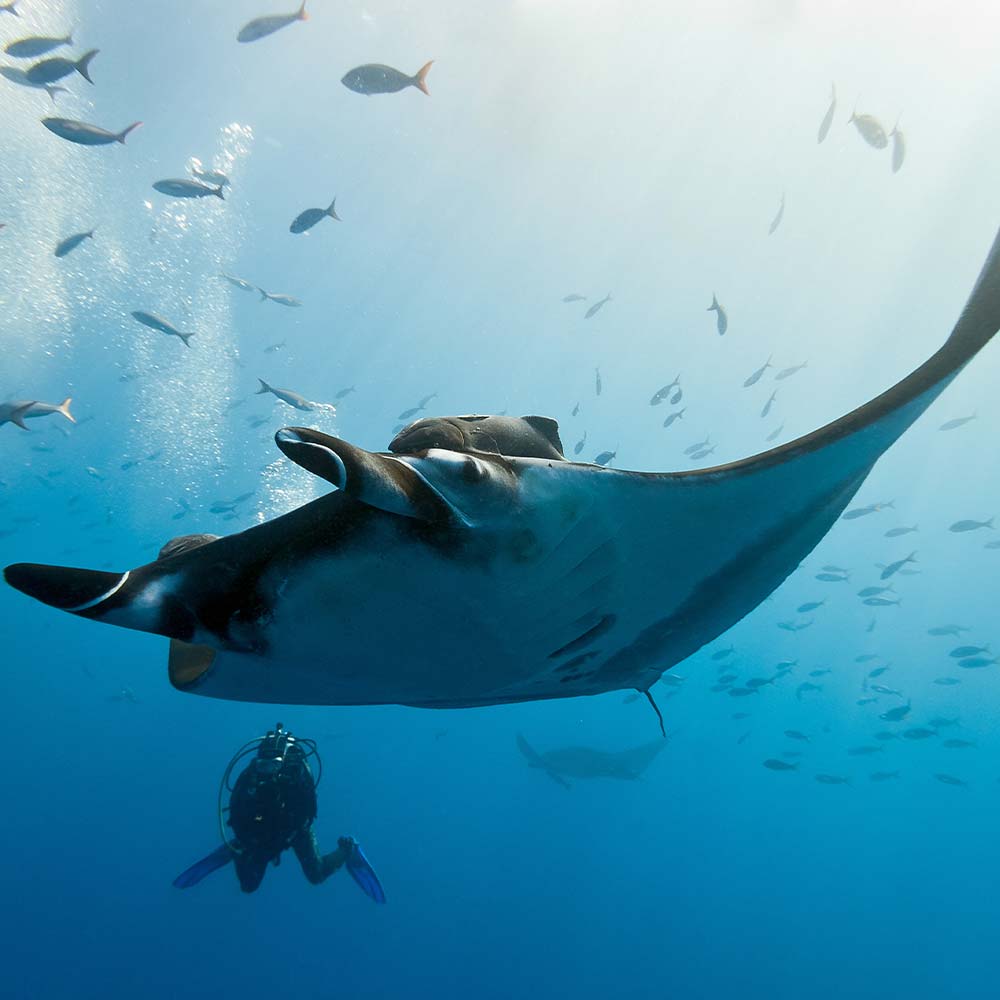
The body parts of fish (fins of fish, fish brain, etc.)
All fishes have a mouth, fins, and a brain. Most have jaws and a backbone, except jawless fishes. Fishes may have two jaws: the oral jaws that open and close the mouth, and pharyngeal jaws in the throat. Almost all fishes, including jawless fishes, have teeth. Toothless fishes include the sturgeon, pipefish, sea horse, and stout infantfish.
The following are the body parts of fish. Note that some fishes don’t have all these parts:
- Eyes: Fish eyes can detect colors and perceive distance, and fishes use their eyes to find food and escape predators.
- Nares: Most fishes have a pair of nostrils, which they use for smelling, not breathing.
- Mouth: Mouths are for catching and consuming food.
- Operculum: The operculum is a bony aperture that covers and protects the gills. Only bony fishes have an operculum.
- Gills: Found on the side of the head, the gills have blood vessels that capture oxygen from water.
- Scales: Most but not all fishes have scales. Jawless fishes (e.g., hagfish and lampreys) have none. Catfish, stout infantfish, paddlefish, and most species of blennies also have no scales. Cartilaginous fishes have placoid scales that do not grow with the fish; instead, new scales grow to fill in the gaps between old scales.
- Vent: Fishes excrete waste, extra water, eggs, and sperm through their vent or anus.
- Fins: Fishes can have pectoral, pelvic, anal, caudal, dorsal, and adipose fins, and bony fishes have paired fins.
- Barbels: Some fishes, such as catfish, sturgeon, and long-barbel goatfish, have barbels or “whiskers” on their head that help them detect food.
- Lateral line system: The lateral line system consists of hundreds of vibration and pressure receptors known as neuromasts. These help fishes detect the direction and the rate at which water is moving, allowing them to sense their own movement and the presence of stationary objects around them. It also alerts them to the movement of nearby prey and predators. The neuromasts may be found on the surface of the skin on the head, trunk and tail fin or embedded on the floor of lateral line canals, located just beneath the skin, which let water in through pore-like openings.
- Gas bladder: Most bony fishes have a gas bladder in their body cavity. Also known as swim bladders, gas bladders contain gas (typically oxygen) and serve as buoyancy organs that allow fish to maintain hydrostatic equilibrium. They enable fishes to swim at their preferred depth instead of sinking or floating. The gas bladder also serves as a resonating chamber that helps fishes hear and produce sound.
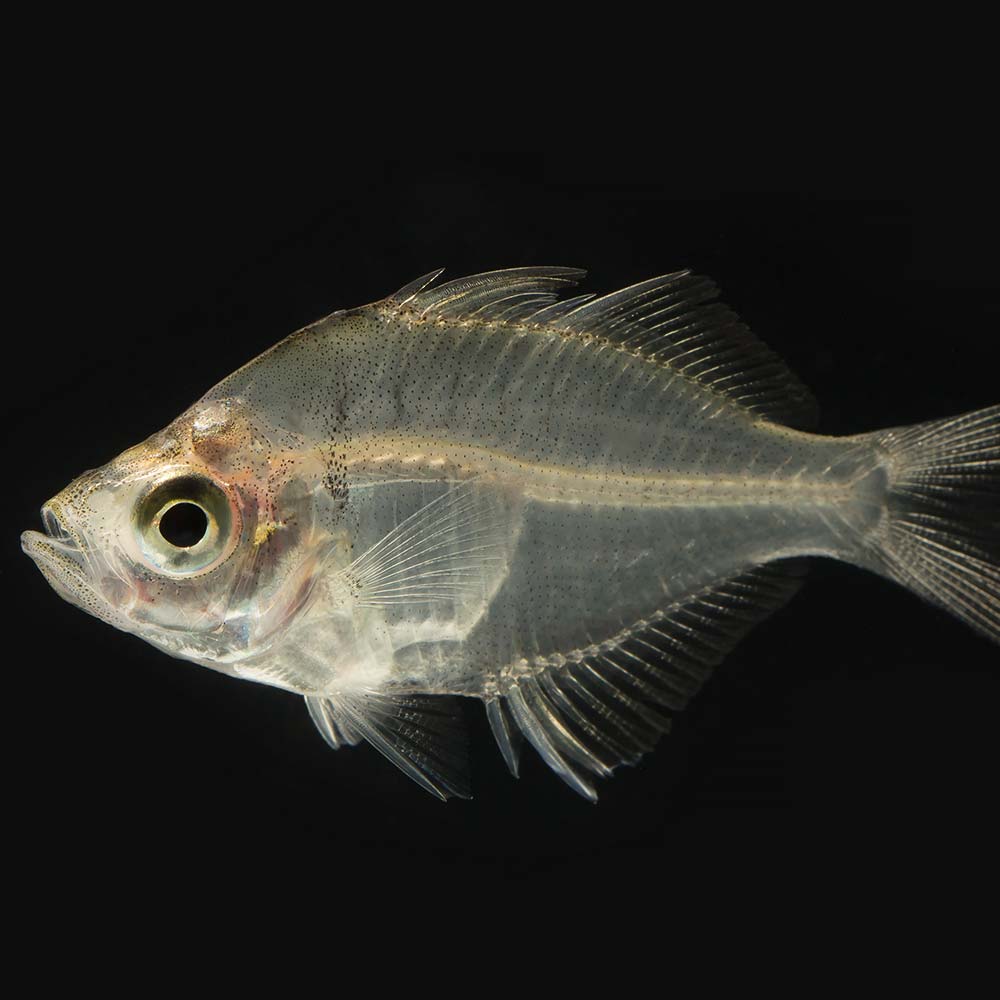
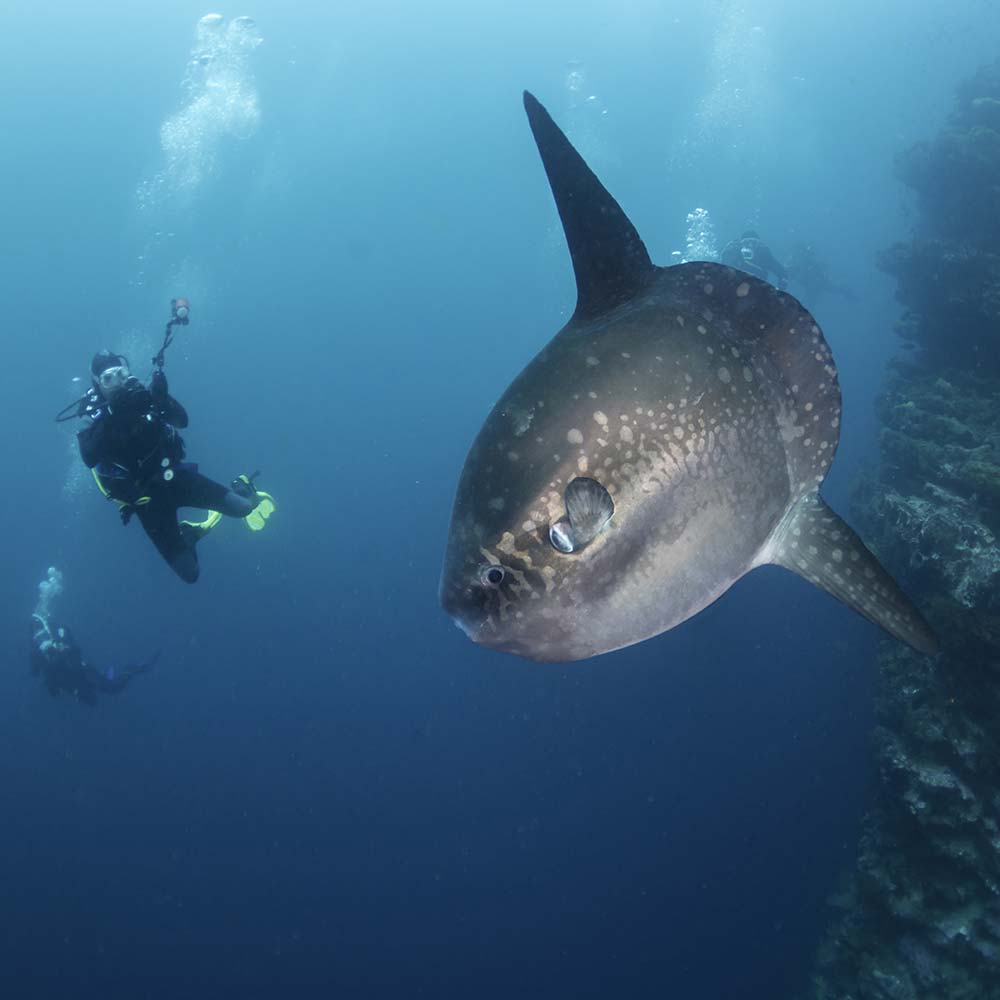
Some bony fish species
The following are eight bony fishes in our care, with info about their natural environment, and the SeaWorld Yas Island, Abu Dhabi realms where you can find them. Make a list and look for them when you visit.
All fishes have endoskeletons, but jawless fishes don’t have a true backbone, and only bony fishes have a skeleton of calcified bone.
What do fishes eat?
Fish can be herbivorous, carnivorous and omnivorous. Herbivorous fishes eat only plants, carnivorous fishes eat other animals, while omnivores can eat both plants and animals.
The plants that fishes eat include algae, phytoplankton, seaweed, duckweed, and other aquatic plants. Carnivorous fishes often eat zooplankton and other fish. For instance, salmon eats Atlantic herring, sand lance, and lanternfish, among others.
Water animals that don’t have endoskeletons, known as invertebrates, are an essential food source for fishes. They include mollusks like squid, clams, snails, octopus and cuttlefish and crustaceans like crabs, prawns, shrimp, and krill. Fishes also eat worms, insects, spiders, and mites.
It may surprise you to find that fishes can eat birds, amphibians, reptiles, and mammals. Bass eat frogs regularly, while trout and pike have been known to eat shrews. If a small duckling, frog, snake, or mouse falls into the water, fishes like the pike, trout, salmon, or largemouth bass may eat it.
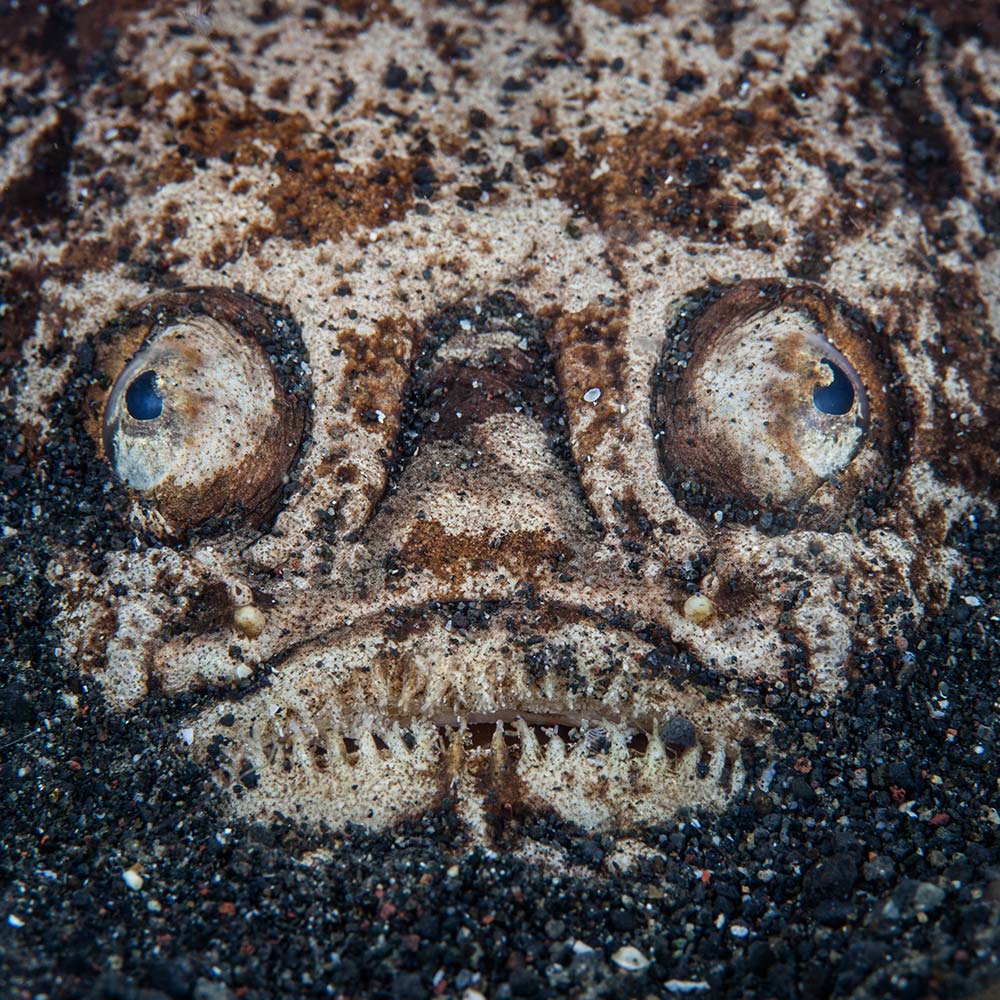
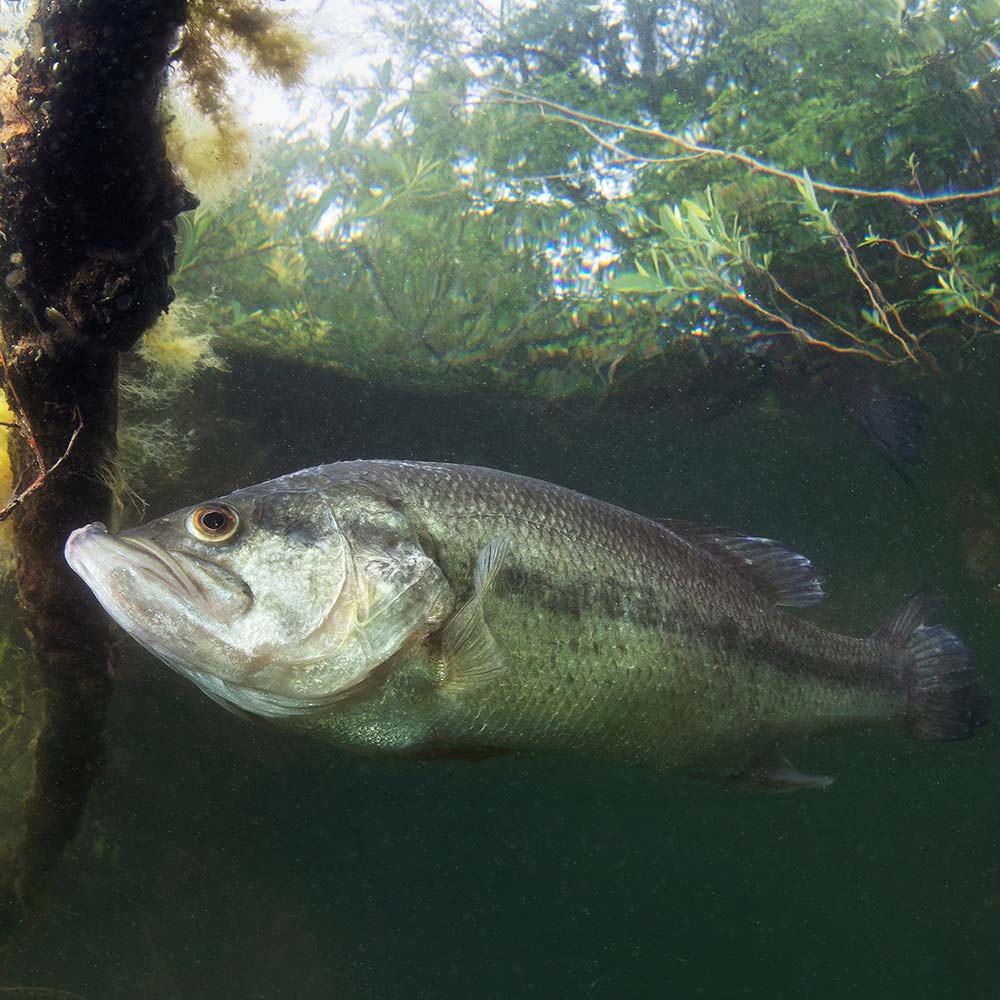
- Characteristics of fishes at a glance
- How big can a fish get?
- How long do fishes live?
- Do fishes socialize?
- How do fishes breathe?
- How do fishes eat?
- Can fishes detect colors?
Adaptation of fish: how have fishes adapted to survive?
Fishes develop characteristics and behaviors that improve their ability to survive and thrive. This is known as adaptation, and species pass their adaptations from generation to generation.
All living things adapt to their surroundings. For instance, we humans adapted by developing a large and complex brain, the ability to walk upright on two feet, longer thumbs that can touch the fingers on the same hand (i.e., opposable thumbs), and a bigger lung capacity. Meanwhile, fishes have adapted in the following ways:
Body shape
Fishes adapted body shapes suited to their feeding habits and habitat.
- The butterflyfish has a disc-like body shape – i.e., laterally compressed or flattened side-to-side with a tall, rounded silhouette (i.e., compressiform). This allows it to navigate the narrow cracks or vertical crevices of coral reefs.
- Tuna has a torpedo- or bullet-like shape (i.e., fusiform) which is streamlined for fast swimming and open-water predation.
- Moray eels have an elongated body shape (i.e., anguiliform) suitable for maneuvering into holes and fissures in rocks (i.e., crevasses).
- Pacific stargazers have a dorso-ventrally flattened or depressed body shape (i.e., depressiform). They look like they have been compressed from top to bottom. This type of body shape is ideal for bottom-dwellers, as it allows a fish to lay in wait for prey on the seafloor, hidden under camouflage or a layer of sand.
- The barracuda has a long and tubular torpedo-like body shape (i.e., elongated fusiform) that is streamlined for minimal drag when swimming in the water and allows it to accelerate in bursts of up to 35 miles per hour. Its elongated body also makes it an effective ambush predator.
Body cover
Fishes have body covering to protect them, make them more efficient swimmers, or nourish their young.
- Stingrays have stinging spines on their tails. Scorpionfish, lionfish and porcupinefish all have defensive spines.
- The barracuda produces slime to reduce friction and make it a more efficient swimmer.
- A young discus fish gets nourishment from its parent’s mucus.
- A seahorse has an armor of bony plates to protect it from predators.
- A parrotfish envelopes itself in a mucus cocoon before it rests to mask its scent and provide a physical barrier against predators.
Coloration
Fish colors and markings serve as social signals and camouflage.
- The butterflyfish has a dark, eye-like spot near its tail. It makes the butterflyfish look bigger and confuses predators.
- Some fishes (e.g., the hogfish, flashing tilefish, and seahorse) change their colors at will by expanding and contracting their pigment cells (i.e., chromatophores).
- During the breeding season, the corkwing wrasse’s fins gain blue spots, and its scales turn bright blue and green.
- The flounder changes its colors to match the seabed.
- Some pufferfishes have patterns and colors that warn would-be predators about their poison, while others have coloring to match their surroundings.
- Most open-water fishes are countershaded, with a top side that’s darker than their underside. The dark top makes them less conspicuous from the surface, while their pale underside makes them less discernible from below.
Eyes
Fish eyes and their position depend on habitat and feeding habits.
- Young flatfishes have one eye on each side of their head, but their skulls shift over time until both eyes are located on just one side. This allows them to lie flat on the bottom of the sea floor on their sightless side and point both eyes up to watch out for both prey and predators.
- Fishes that live in deep waters have large eyes that let them see better in the dark, while fishes that stay primarily near the surface have smaller eyes.
- Predators often have forward, close-set eyes for better depth perception.
- Prey often have eyes set far on each side for a wider-angle view so they can better avoid predators.
- Some fishes have lost their ability to see. After all, cavefishes don’t need eyes when they’re in a place that’s too dark to see.
Mouth
Fishes have adapted their mouths to where they feed and how and what they eat.
- A large mouth allows a fish to consume large prey.
- A protruding mouth lets a fish suck in prey.
- A mouth that points forward and is located on the middle of the head, usually with extendable jaws, lets a fish efficiently consume prey that’s right in front of it.
- A scoop-like mouth with longer lower jaws enables a fish to ambush prey on the water surface.
Breathing
Fishes use gills to breathe underwater. However, they have adapted other organs for efficient respiration.
- Mudskippers can breathe through their skin.
- Some fishes, like trahira and true loaches, can breathe through their intestines.
- Armored catfishes can breathe through their stomachs.
- Lungfishes have lungs that allow them to surface and breathe in air.
Physiology
Some fishes have unique physiological characteristics.
- Some mid- and deep-water fishes can produce light. The golden puffer fish and flashlight fish get their light from bioluminescent bacteria. The lanternfish and hatchetfish produce light through light-producing cells (i.e., photophores). The deep-sea anglerfish uses its light to lure in prey, but the bristlemouth uses light to break its silhouette and make it less visible from below.
- Some fishes, like the lionfish, scorpionfish, and stonefish, defend themselves by injecting venom into their predators.
- The hagfish coats the carrion it’s feeding on with slime. This discourages other fishes from stealing its meal.
- Some fishes are toxic. The pufferfish has poison in its skin, liver, gonads, and intestines that could kill a predator that eats it.
- Some fishes, such as sharks, skates and rays, can sense electric fields. They use this to detect the electric field of prey and to locate and communicate with other members of their species.
- Some, like the stargazer, electric eel, and electric ray, produce electricity. Stargazers use electricity to defend themselves, while electric eels also use it to capture prey.
Behavior
Fishes have adapted their behaviors to their surroundings.
- When a porcupinefish is in danger, it gulps water (or air) and puffs up like a round ball with sharp, outward-pointing spines. This makes the porcupine fish difficult to swallow.
- Some fishes, like anchovies and herring, practice schooling or swimming together as one big unit. Schooling can deceive predators into thinking they’re dealing with one big fish. It also makes it difficult for predators to target any single fish in the school.
- Some fishes, like barb, rainbow fish and red-bellied piranha, practice shoaling or staying in one place with fishes from the same or different species. This behavior makes finding food and a mate easier. Shoaling also ensures fishes get ample warning when there are predators.
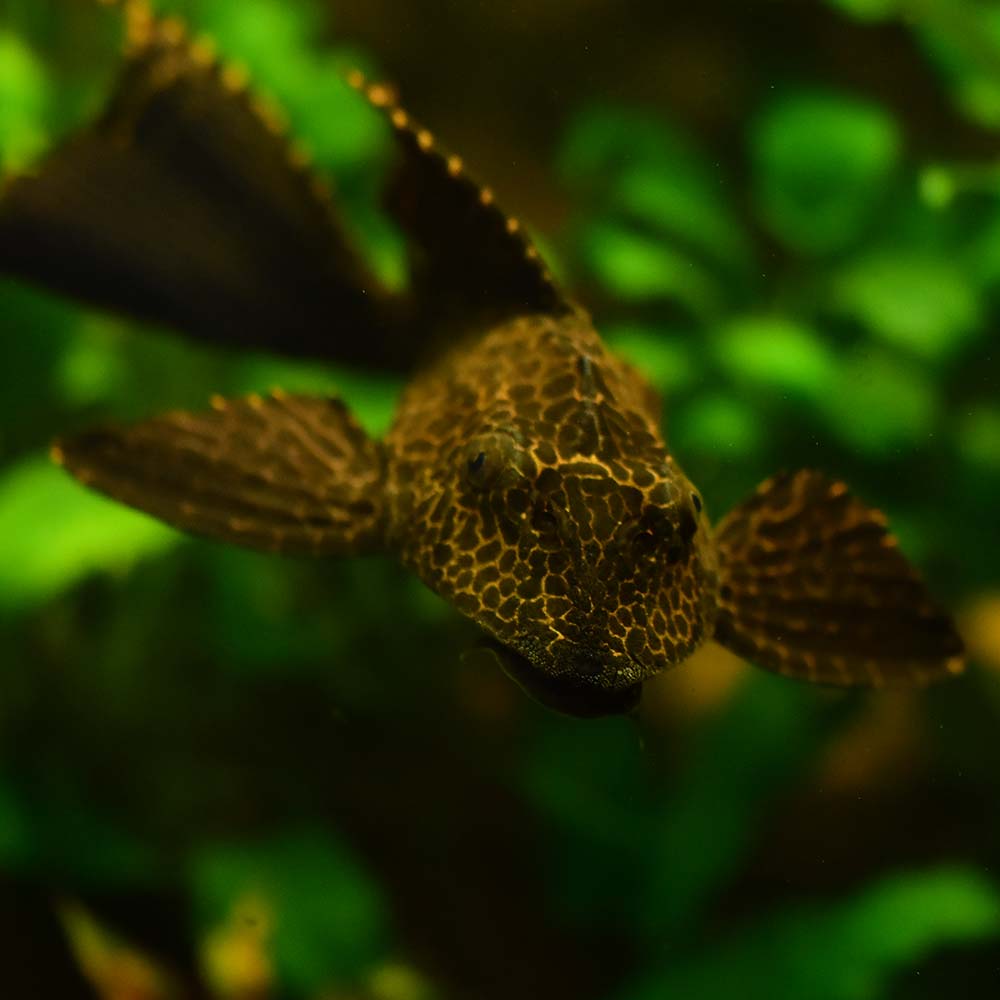
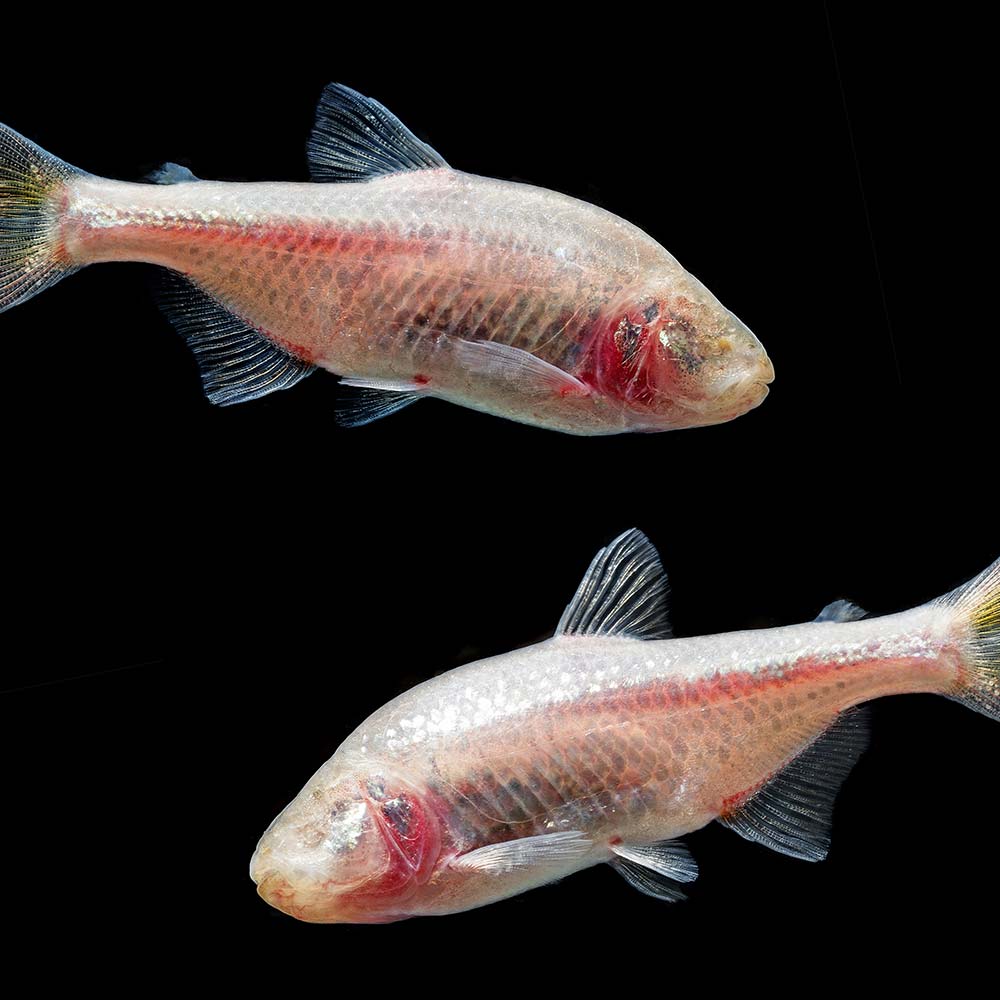

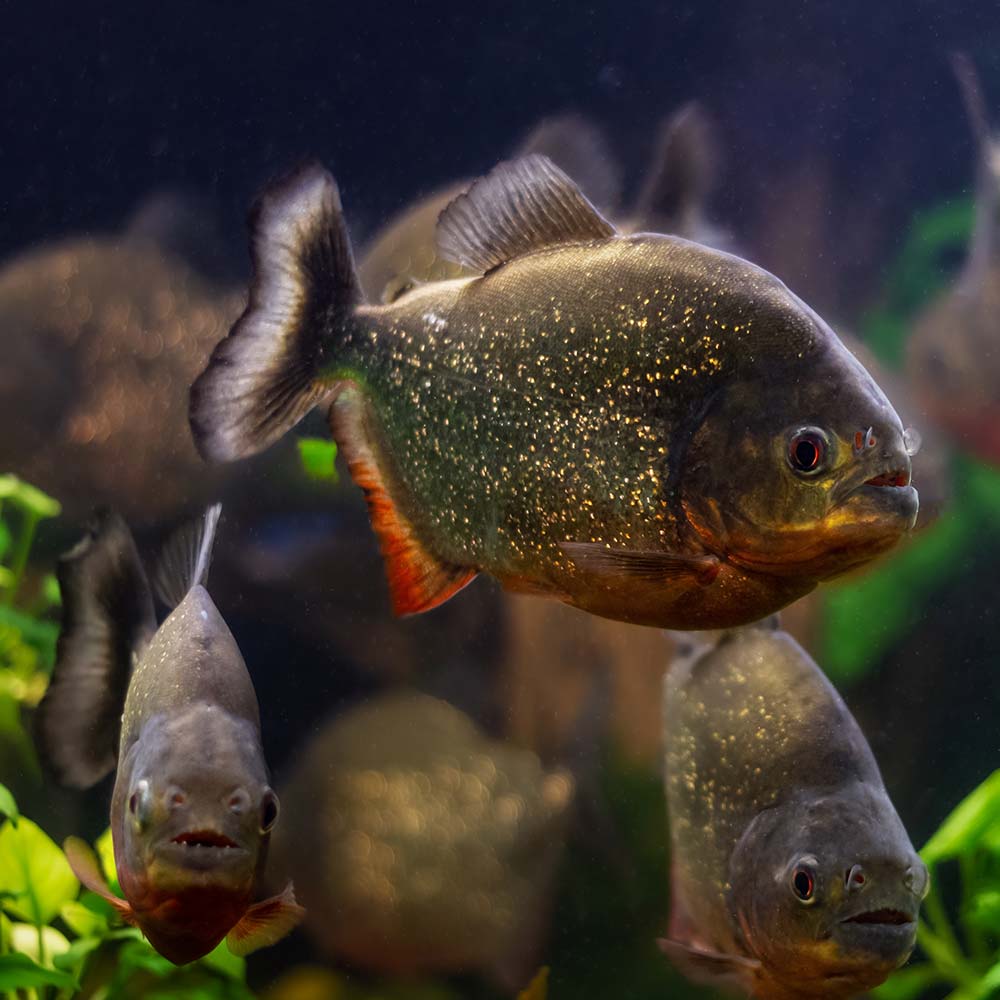
Fun facts about fish
There’s so much we still don’t know about our fishy friends, but here are a few fun facts to add to your repertoire of fish knowledge.
- There are around 35,500 known species of fish, but there are probably more we don’t know about. Approximately 50% of all animals with endoskeletons are fish.
- Contrary to popular belief, fishes are smart, respond to training and have good memories. A study shows fishes can remember what they ate 12 days ago, and scientists are convinced they can retain memory for up to five months.
- Fishes are like trees in that they have growth rings that tell scientists how old they are. You’ll find these growth rings in their backbone, ear bones, or scales.
- Fishes rest, but they don’t sleep like we do. While resting, they have reduced metabolism and activity levels but can still sense danger.
- Fishes cannot close their eyes because, with the exception of sharks, they do not have eyelids. Even some sharks with eyelids cannot close their eyes all the way.
- The male photocorynus spiniceps angler fish attach themselves by their jaws to the head or sides of the first female they meet. Like parasites, they live off the juices of their female host, ensuring their sperm are readily available when the female releases its eggs.
- It’s the male seahorse that carries the offspring. The female seahorse deposits its eggs into a pouch on the male seahorse’s abdomen. The male releases its sperm and, after 30 days, the male releases up to 1,000 young seahorses.
- Starfish, jellyfish, cuttlefish, shellfish, and crayfish are not fish.
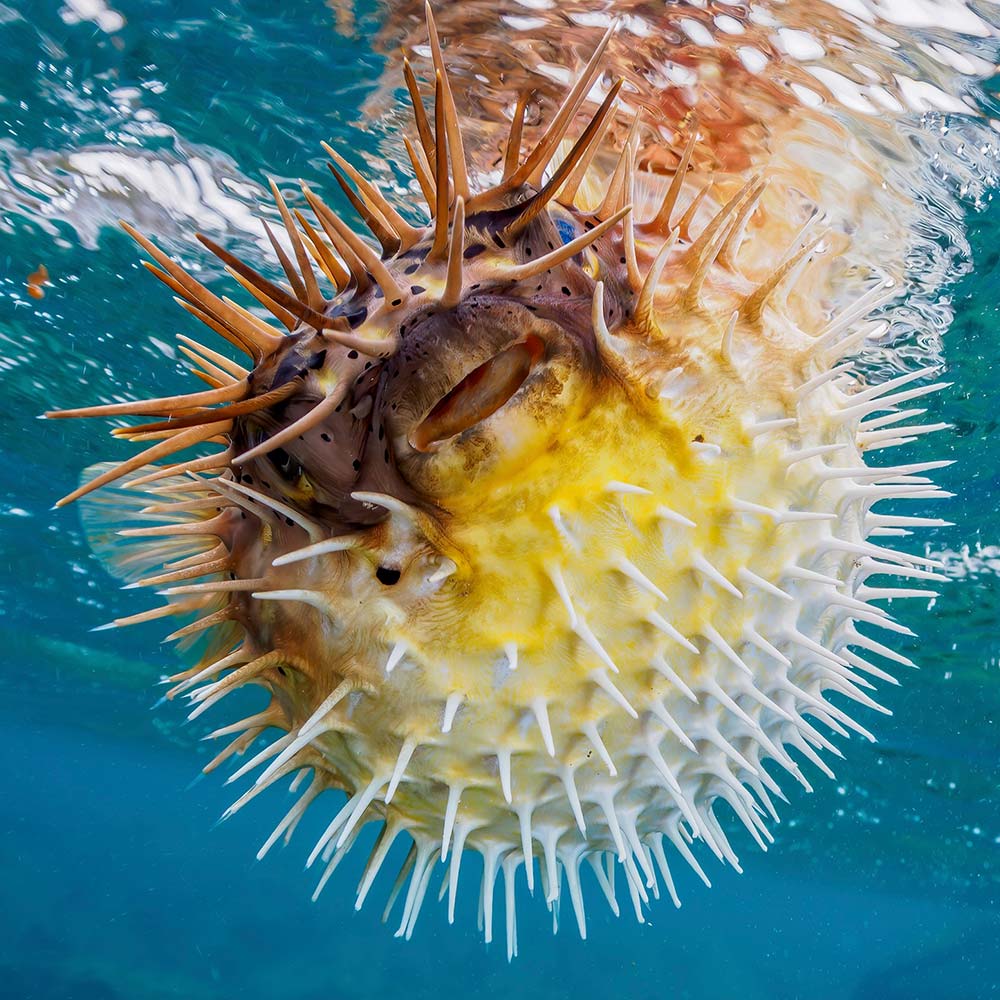
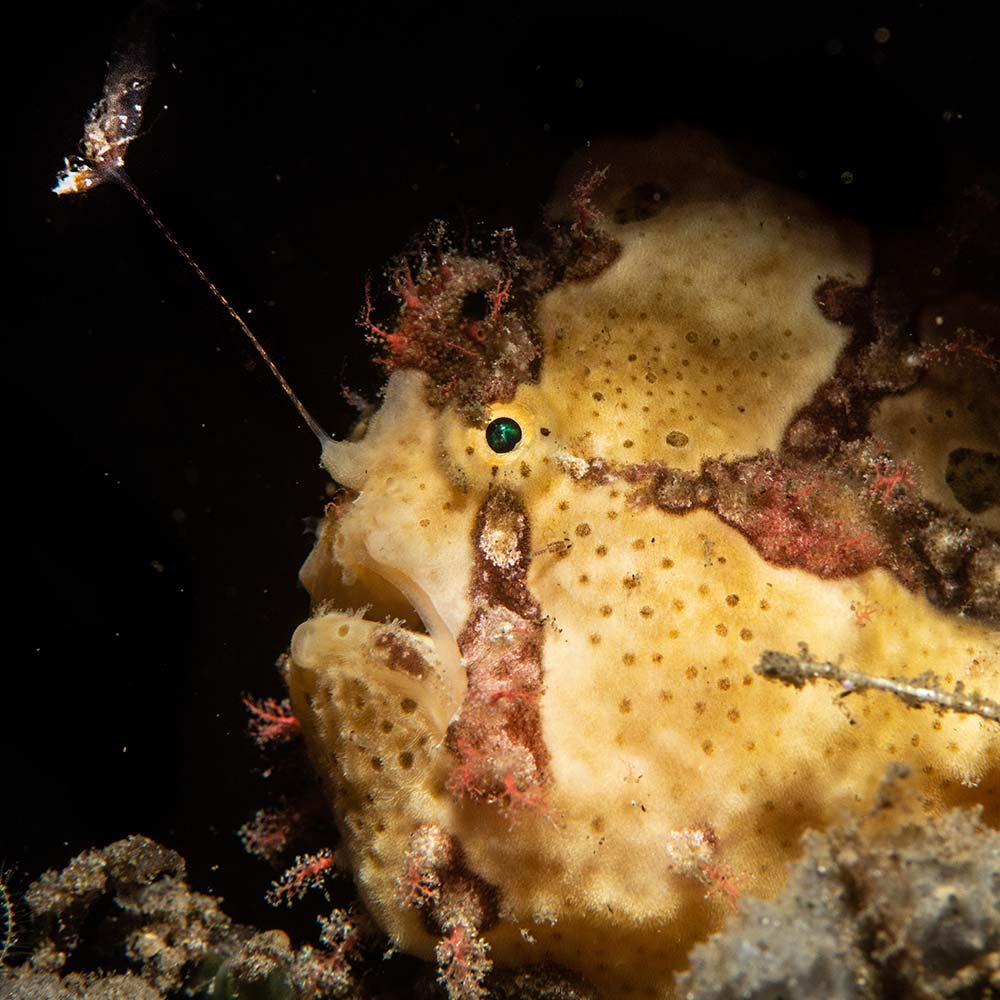
See and learn all about fish at SeaWorld Yas Island, Abu Dhabi
Come to SeaWorld Yas Island, Abu Dhabi to learn more about fish and observe fishes and their behavior in person. We have made sure to recreate their habitat precisely, even mimicking their optimal air and water conditions.
Find the Māori wrasse, orange spotted grouper, bluespot boxfish, and moray eel in Endless Ocean, the long-barbel goatfish in Endless Ocean and Abu Dhabi Ocean, the trevally in Endless Ocean, Abu Dhabi Ocean, and Tropical Ocean, and the powder blue tang in Endless Ocean and Tropical Ocean. You can also go on a unique SeaVenture underwater walking tour to observe sharks, rays and schooling fish up close.
Did you like reading our story?
If you enjoyed or learned something from this story, sign up for our newsletter and be informed when a new story comes up! Please enter your email below.




